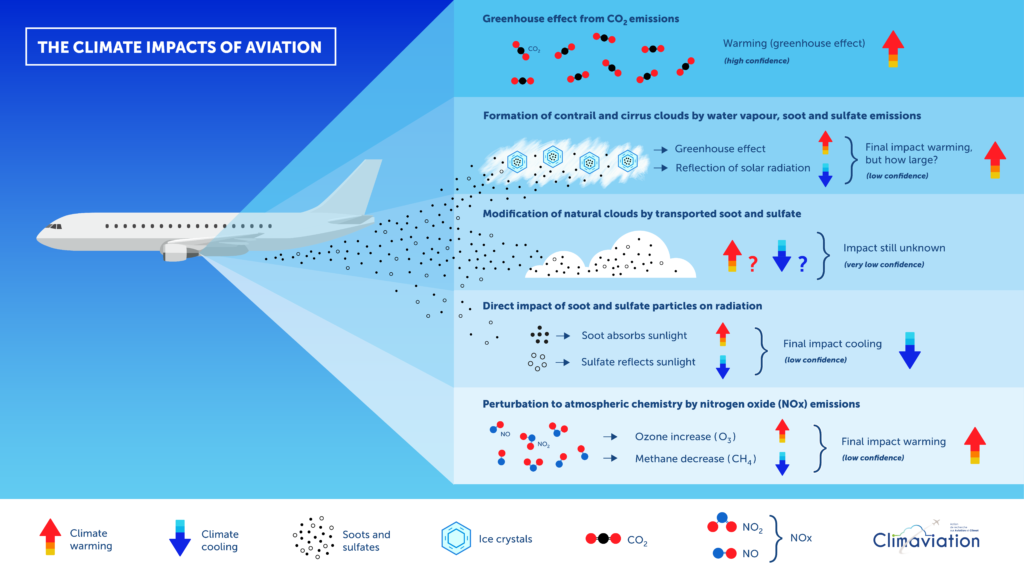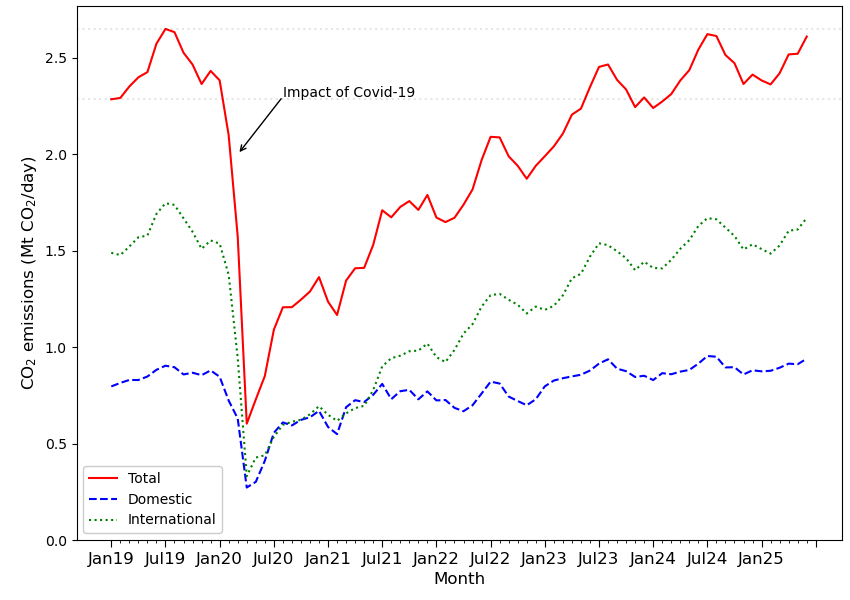Climaviation, a fusion of the words Climate and Aviation, is an ambitious research action to understand and quantify the climate impacts of aviation. Climaviation is funded over the period 2021-2026 by the French Civil Aviation Authority (DGAC) as part of the French National Recovery and Resilience Plan and NextGenerationEU. This scientific research project brings together some thirty researchers from the Institute Pierre-Simon Laplace (IPSL) – represented in particular by its stakeholders Sorbonne University and the French National Centre for Scientific Research (CNRS) – and from the French Aerospace Lab (ONERA).
Faced with the climate emergency, aviation is now committed to a strategy of accelerated decarbonisation on a global scale, which sets targets for reducing CO2 emissions by 2050. This strategy is based on intensifying efforts to improve the energy efficiency of aircraft and their operations, but also on the use of alternative fuels with a low carbon footprint, and even new decarbonised energy carriers such as hydrogen.
However, CO2 is not the only contributor to the overall climate impact of aviation. Aircraft engines also emit nitrogen oxides (NOx), water vapour and particles into the upper atmosphere. Through complex physical and chemical processes, these compounds also generate disturbances in the earth’s radiation balance, referred to as «non-CO2 effects».

According to the most recent estimates, based on climate modelling, the impact of non-CO2 effects could be greater than that of CO2, at least in the short term, but the level of uncertainty in these estimates remains high due to the complexity of the mechanisms to be modelled and the many scales to represent in the simulations.
To minimise the total climate impact of aviation, it is therefore essential to better understand and quantify the non-CO2 effects in order to take them into account in the strategies to reduce this impact.
The objectives of Climaviation are therefore:
- To better understand and quantify the most uncertain mechanisms of the climate impact of aviation
- To assess the impacts of new fuels (biofuels, electrofuels, hydrogen)
- To study and propose minimisation strategies based on synergies and/or trade-offs between CO2 and non-CO2 effects.
The non-CO2 climate impacts of aviation.
-
- Nitrogen oxides (NOx) formed at high temperatures during combustion in engines react and contribute indirectly to global warming by forming ozone, while they have a cooling effect by destroying atmospheric methane. Both ozone and methane are greenhouse gases.
- Water vapour, the main product of hydrocarbon combustion, together with CO2, forms ice crystals as it condenses and then freezes and generates contrails, which depending on atmospheric conditions can persist for up to several hours and eventually evolve into induced cirrus clouds, with a significant local radiative impact. These induced cirrus clouds can have two opposing effects. Depending on the time of day, they can reflect solar radiation (causing cooling), but can also block outgoing infrared radiation (causing warming).
- Combustion particles, mainly soot generated by incomplete combustion, act as condensation nuclei in the formation of the ice crystals that make up contrails. They also serve as clouds condensation nuclei in the atmosphere. Precursor gases of volatile organic compounds (VOCs) and sulphur oxides generated by combustion can also form particles (secondary aerosols) that can act as cloud condensation nuclei.
The change in the Earth’s energy balance due to these impacts, as well as the impact of CO2 emissions, is called radiative forcing. The figure below shows the current estimates and uncertainties on the different components of this forcing.

CO2 emissions from aviation since 2019

